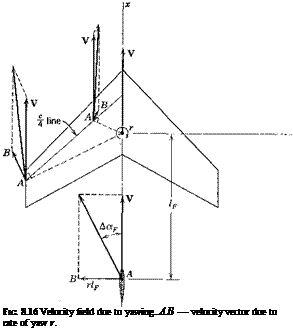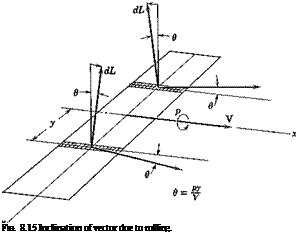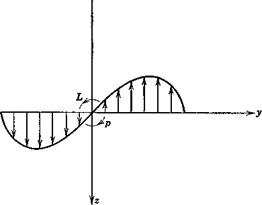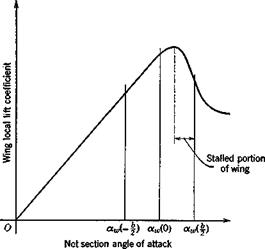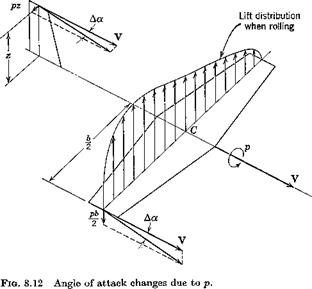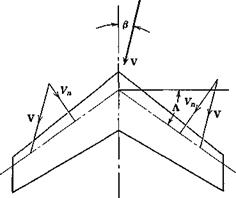THE DERIVATIVE C„r
 |
|
The only contribution to Cy that is normally important is that of the tail. From the angle-of-attack change we find the incremental Cy to be
THE DERIVATIVE C,
bt
This is another important cross derivative; the rolling moment due to yawing. The increase in lift on the left wing, and the decrease on the right wing combine to produce a positive rolling moment proportional to the original lift coefficient CL. Hence this derivative is largest at low speed. Aspect ratio, taper ratio, and sweepback are all important parameters.
When the vertical tail is large, its contribution may be significant. A formula for it can be derived in the same way as for the previous tail contributions, with the result
THE DERIVATIVE C„
,lr
СПг is the damping-in-yaw derivative, and is always negative. The body adds a negligible amount to СПг except when it is very large. The important contributions for airplanes are those of the wing and tail. The increases in both the profile and induced drag on the left wing and the decreases on the right wing give a negative yawing moment and hence a resistance to the motion. The magnitude of the effect depends on the aspect ratio, taper ratio, and sweepback. For extremely large sweepback, of the order of 60°, the yawing moment associated with the induced drag may be positive: i. e. produce a reduction in the damping.
The side force on the tail also provides a negative yawing moment. The calculation is similar to that for the preceding tail contributions, with the result
2f + d?) (8’7;4)
Just as with Cm, there is a damping-in-yaw provided by the propulsive jet on jet and rocket vehicles. The calculation of ДGm applies exactly to this case as well if M be replaced by N, and q by r. The result is the same as (7.9,20 and 22), i. e.
Д Nr = -2 т’Ц
![]() АСПг = -4СТ? гЩ (8.7,5)
АСПг = -4СТ? гЩ (8.7,5)
V} c“











